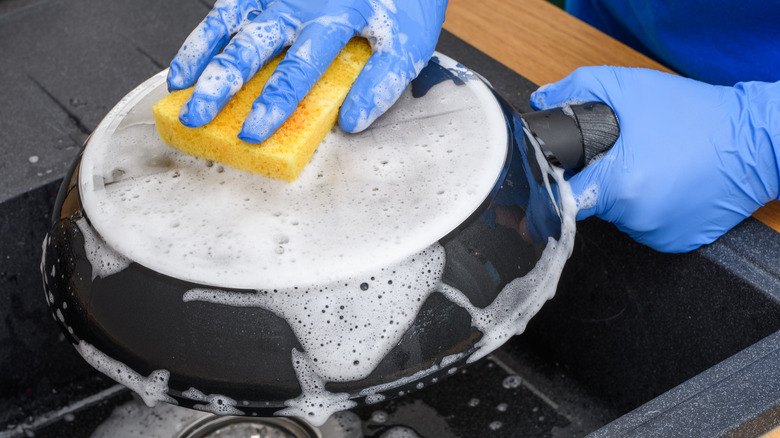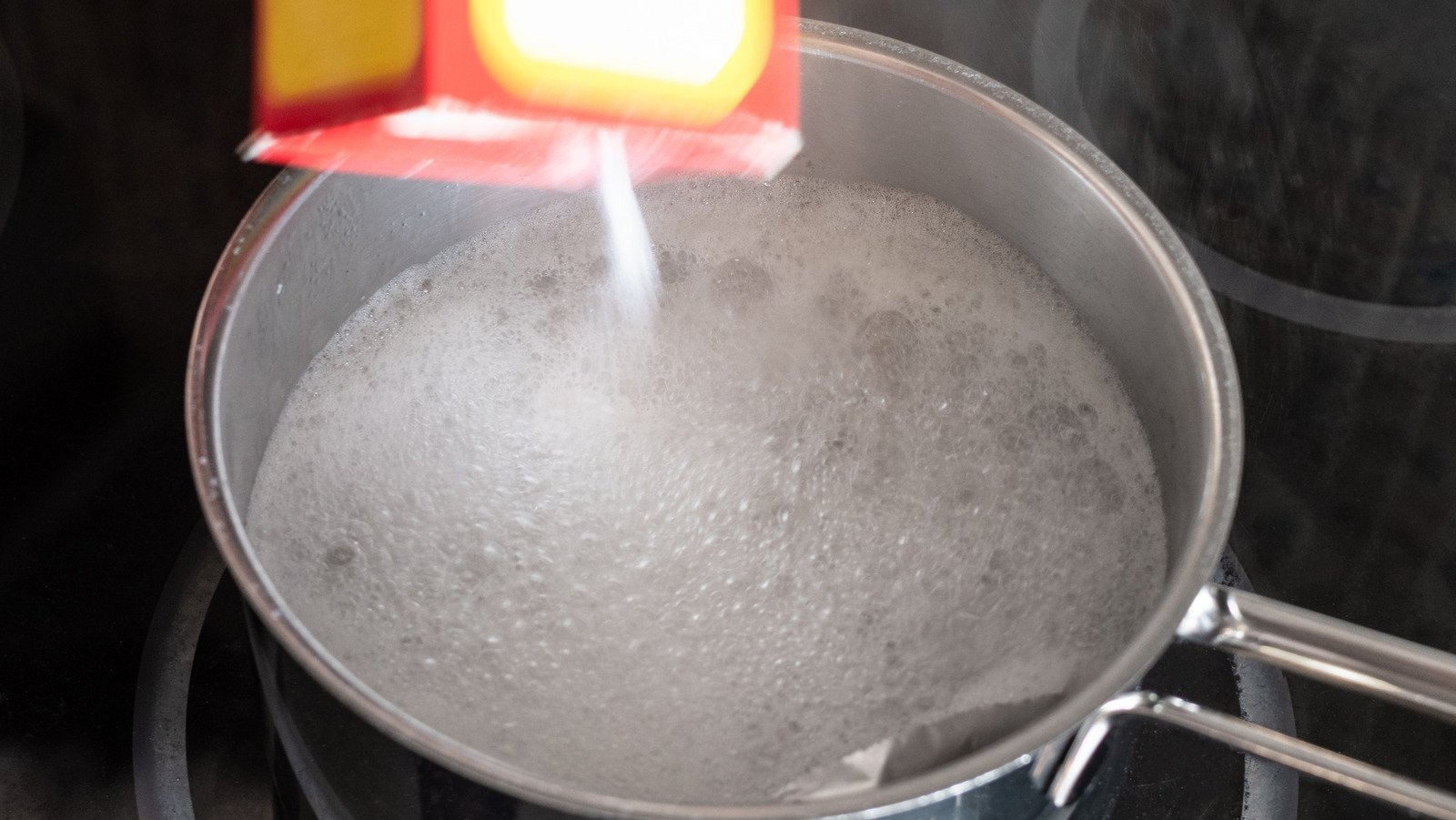Baking soda may not sound glamorous, but it’s a valuable pantry product. It’s an economical go-to for a range of everyday cleaning duties, makes an effective all-purpose cleaner, cleans tough stains on baking sheets, kills household odors, and much more. With its mild abrasive qualities, baking soda excels at gently scrubbing away food bits from pots and pans without leaving scratches. However, if you’re using aluminum cookware, it’s crucial to ensure you rinse off all traces of baking soda post-cleaning.
For starters, the taste of baking soda is not great, especially when it’s been rubbed into aluminum. You’ll want to rinse to avoid that metallic, bitter flavor. In addition, the same product that cleans off discoloration can cause the same problem if left on the metal. Baking soda’s low pH can react with the aluminum surface over time, potentially leading to unsightly discoloration, making that aluminum pan look dark and discolored. But a thorough rinse is your solution to preventing this unwanted side effect.
Baking soda steps for success

If your aluminum cookware has developed unsightly discoloration from repeated use, grab that reliable box of baking soda. Just mix it with a bit of water to create a paste, and then gently rub the discolored areas with a sponge or dishcloth. Keep in mind that aluminum is a relatively soft metal, susceptible to scratching even with the gentle abrasion of baking soda; so it’s wise to test this method on a small, inconspicuous area first. You may need to repeat the process for deep stains. For very stubborn stains, adding some hydrogen peroxide to the baking soda might release more of the grime with less scrubbing.
After your thorough cleaning, rinse the pan or baking sheet with plenty of water, then use a bit of soapy water to be sure all traces of the baking soda are removed. You’ll be rewarded with shiny, almost good-as-new pans for just a bit of elbow grease.







